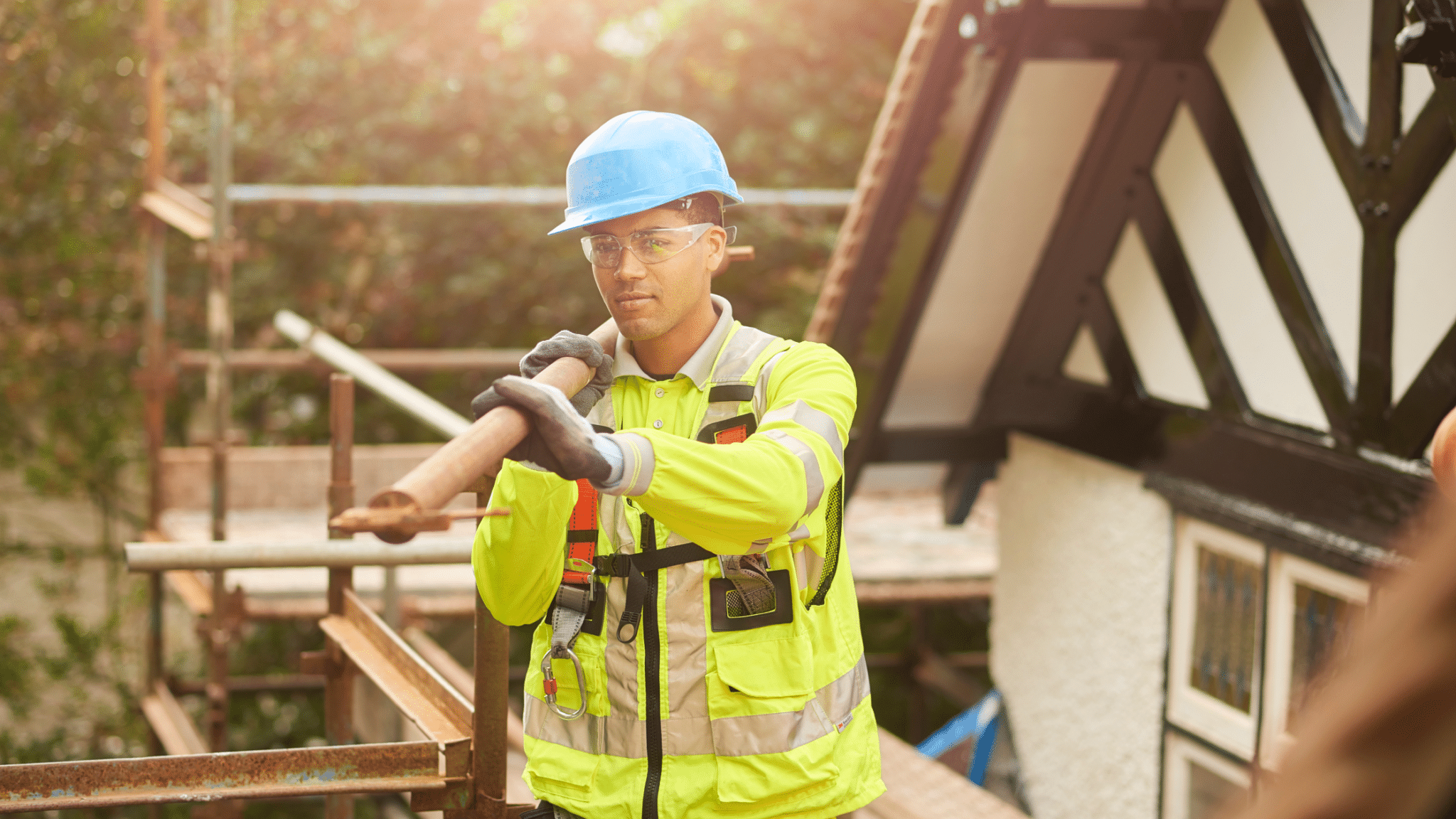Understanding a scaffolder's job responsibilities ensures you avoid scams and get your money's worth. Also,…

Should Scaffolding be Attached to the Building?
Scaffolding is one of the most useful tools when working at heights, but sometimes, it can be a huge safety hazard if it wasn’t erected in a manner suitable for its location and surrounding conditions. In this article, we discuss the necessity of attaching scaffolding to buildings or other structures for additional support.
So, should scaffolding be attached to the building? Large-scale, long-term projects that do not need to be moved around will always need to be attached to the side of the building, or to the ground to prevent shifting. The appointed inspector will determine whether or not scaffolding should be attached to the building.
Read on to learn more about why and when scaffolding should be attached to buildings.
Jump To:
- Should Scaffolding be Attached to the Building?
- Why are Scaffolds Tied to Other Structures?
- How Do You Secure Scaffolding To a Building?
- Do Scaffold Planks Need to be Tied Down?
- Experienced Scaffolding Erectors in Sheffield

Should Scaffolding be Attached to the Building?
Some, but not all, scaffolding should be attached to the building (or to the ground) to stop it from shifting. There are various factors that determine whether or not scaffolding should be attached to a building, including:
Height
When scaffolding is erected at a height 3 times its width, or where the stability of the structure is at risk for another reason, the scaffolding must be attached to the wall. Regulations state that the first vertical tie should be a maximum height of 4 times the narrowest base dimension, and additional ties should not exceed 26 feet vertically.
Location
The location of where the scaffolding is to be erected also determines whether or not it should be attached to the building. Factors here include:
- Type of ground the scaffolding rests on
- The surrounding environment
- Ease of access
If the ground is not flat or stable, the scaffolding should always be anchored to the building to provide stability. Likewise, if the job is being carried out in an area that is exposed to the elements (e.g. strong winds, wet weather), attaching scaffolding to the side of a building will help to minimise risks.
Duration
Long-term jobs that don’t need to be moved around the site will almost always be attached to the building to add an extra layer of safety protection. This will stop the scaffolding from shifting over time.
Type of Scaffolding
Some types of scaffolding will not need to be attached to the building as it would be impractical for the job at hand. For example, MEWPS need to be free to move around the site, as do rolling scaffolds.
Type of Job
The type of job that the scaffolding is being used for will also play a part in whether or not it should be attached to a building. Factors such as the weight of the loads being supported, the number of people using it, if the structure needs to be moved around, the height of the scaffolding, and various other details are all taken into consideration when determining if the scaffolding needs to be attached to the building.
Why are Scaffolds Tied to Other Structures?
Scaffolding is tied to other structures to provide an additional layer of safety and stability when there is a higher risk of injury from such factors as the weather, the height of the scaffolding, the ground surface that the scaffolding is being erected on, the type of job, and the type of scaffolding being used.
How Do You Secure Scaffolding To a Building?
Scaffolding is attached to a building with the use of ties. Ties are a mixture of couplets and tubes which are placed under a working platform and anchored to the building. They should always be connected to the standards, not the ledgers., and should be attached as the scaffolding is being erected – they should never be attached later as an afterthought.
Ties should be used every 3 horizontal bays, and a maximum of every 4m, or 2 lifts, vertically. The ties should be staggered, however, not placed in the same position at each bay.
The video below will help you to better understand how ties are used to attach scaffolding to a building
Do Scaffold Planks Need to be Tied Down?
A risk assessment should always be conducted to determine the necessity of tying down scaffold planks, however, a good rule of thumb is that boards less than 2.13m long and under 38mm thick should be tied down to prevent tipping. Boards shorter than 1.6m should be tied down at both ends.
Experienced Scaffolding Erectors in Sheffield
Hi-Point Access provides a wide range of access scaffolding and other access platforms in Sheffield and across South Yorkshire. Where necessary, our experienced scaffolders will erect your scaffolding for you to ensure a strong, stable working platform.
Whether you’re looking for Aluminium Scaffolding, Traditional Scaffolding, Indoor Scaffolding, Access Platforms, or MEWPs, we have something to suit your job. Get in touch with us today to see what we can do for you.



